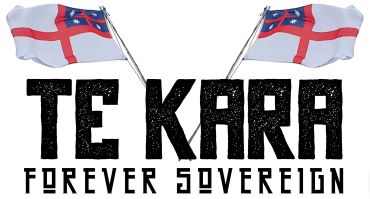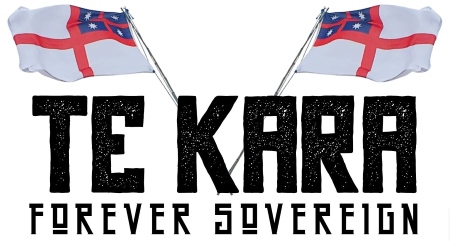The Waitangi Tribunal has addressed the issue of Māori sovereignty in several of its reports, particularly in the context of the Treaty of Waitangi and the differing interpretations of its Māori and English texts. One of the most significant findings is that Māori did not cede sovereignty to the British Crown. This conclusion is based on a careful analysis of the Treaty’s texts, historical context, and the intentions of the signatories.
Below are excerpts from the Waitangi Tribunal’s reports that explicitly state this finding, followed by a summary of the key points.
Excerpts from Waitangi Tribunal Reports:
1. He Whakaputanga me te Tiriti / The Declaration and the Treaty: The Report on Stage 1 of the Te Paparahi o Te Raki Inquiry (2014):
This report focuses on the northern region (Te Raki) and the significance of He Whakaputanga (the Declaration of Independence) and the Treaty of Waitangi. It is one of the most comprehensive discussions of Māori sovereignty.
- Paragraph 5.6.1:
“We conclude that Māori did not cede their sovereignty to Britain in February 1840. That is, they did not cede authority to make and enforce law over their people or their territories. The rangatira who signed te Tiriti o Waitangi in February 1840 did not cede their sovereignty. They agreed to share power and authority with the Governor, but they retained their independence and their own chiefly authority.”
- Paragraph 5.6.2:
“The rangatira agreed to the Governor having authority to control British subjects in New Zealand and to keep the peace between Māori and Pākehā. They did not agree to the Governor having authority over Māori or their territories. They retained their tino rangatiratanga, their independence and full chiefly authority.”
- Paragraph 5.6.3:
“The Crown’s assertion of sovereignty over New Zealand was based on a flawed understanding of the Treaty. The Crown assumed that Māori had ceded sovereignty, but this was not the case. Māori understood that they were retaining their authority and independence, while agreeing to a relationship with the Crown.”
2. Te Paparahi o Te Raki Inquiry (2014):
This inquiry reaffirmed the findings of the Stage 1 report, emphasizing the importance of the Māori text (Te Tiriti) over the English text.
- Paragraph 2.3.1:
“The Tribunal finds that the Māori text of the Treaty (Te Tiriti) is the definitive text for understanding the agreement made in 1840. The English text, which states that Māori ceded sovereignty, does not reflect the intentions of the Māori signatories. The Māori text guarantees tino rangatiratanga (absolute sovereignty) to Māori, while granting the Crown kāwanatanga (governance) over British subjects.”
- Paragraph 2.3.2:
“The Crown’s assumption of sovereignty was based on a misinterpretation of the Treaty. Māori did not cede sovereignty, and the Crown’s actions in asserting sovereignty were inconsistent with the principles of the Treaty.”
Summary of Key Points:
- Māori Did Not Cede Sovereignty:
The Waitangi Tribunal concludes that Māori did not cede sovereignty to the British Crown in 1840. The rangatira (chiefs) who signed Te Tiriti o Waitangi retained their tino rangatiratanga (absolute sovereignty) over their lands, people, and resources. - Flawed Crown Assumption:
The Crown’s assertion of sovereignty was based on a misunderstanding of the Treaty. The English text claimed that Māori ceded sovereignty, but this was not reflected in the Māori text or the intentions of the Māori signatories. - Shared Authority, Not Cession:
Māori agreed to share authority with the Crown in specific areas, such as controlling British subjects and maintaining peace between Māori and Pākehā. However, they did not agree to the Crown having authority over Māori or their territories. - Definitive Māori Text:
The Māori text of the Treaty (Te Tiriti) is considered the definitive version. It guarantees tino rangatiratanga to Māori while granting the Crown kāwanatanga (governance) over British subjects. - Implications for Modern New Zealand:
The Tribunal’s findings have significant implications for New Zealand’s legal and political systems. They challenge the legitimacy of the Crown’s sovereignty and call for a reexamination of the relationship between the Crown and Māori, based on the principles of partnership and mutual respect.
Conclusion:
The Waitangi Tribunal’s reports clearly state that Māori did not cede sovereignty to the British Crown in 1840. This finding is based on a careful analysis of the Treaty’s texts and the intentions of the Māori signatories. The Tribunal’s conclusions highlight the importance of honoring the Māori text of the Treaty (Te Tiriti) and recognizing Māori tino rangatiratanga as a foundational principle of New Zealand’s constitutional framework. These findings continue to shape debates about sovereignty, jurisdiction, and the relationship between the Crown and Māori in modern New Zealand. Many hapu are live how they should within their own jurisdiction and use various methods to nullify ‘breaches’ of the British Crown laws and legislations, avoid fines, council rates and other interferences.

